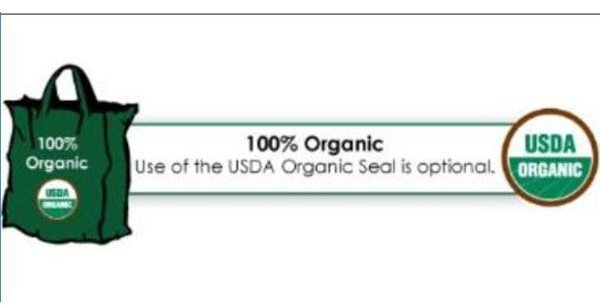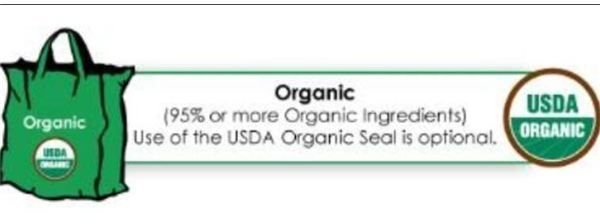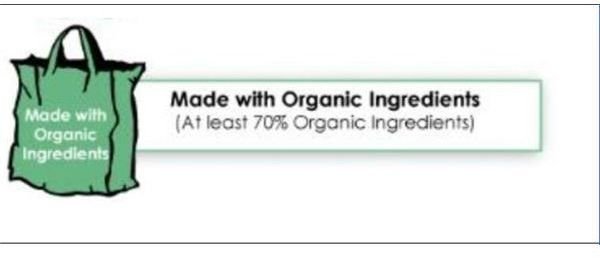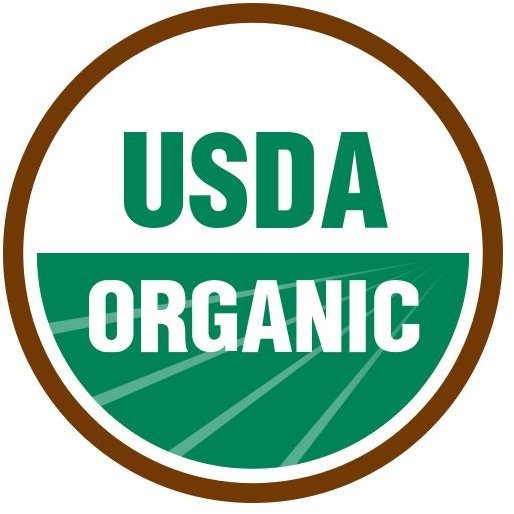Ensuring Organic Beef Food Safety: Understanding the USDA's Organic Label
The Enactment of the Organic Foods Production Act (OFPA)
Literature about organic beef food safety has become increasingly important. Formerly, there was lack of awareness among shoppers that about 60 to 70 percent of the grocery-sold food items were already biotechnologically produced. Beef products that were genetically modified were being touted as “Frankenbeef”, as a result of controversial issues on how certain cattle herds were being raised.
In addition, the 2003 occurrence of the cattle disease called “Bovine Spongiform Encephalopathy (BSE,) or “Mad Cow” in some US cattle ranches, created an impact among meat consumers. It was difficult for the buying public to make informed decisions between organic farm yields and biotechnologically produced foods, simply because most of the products were not properly labeled.
The demand for organically produced food increased, but different standards about the concept of organic had made it possible for unscrupulous entrepreneurs to mislead consumers. False and ambiguous claims about organic products were made in order to enhance their marketability. Hence, it further complicated the issues about organic beef food safety.
In line with this, the US Congress enacted the Organic Foods Production Act (OFPA) to ensure safety not only for organic beef but for all other food products claimed as “all-natural”. Currently, the US Department of Agriculture (USDA) oversees the implementations of this Act through its National Organic Program (NOP). The latter is the USDA’s arm in regulating the operational activities among organic food growers, producers, manufacturers, processors, and handlers to ensure compliance with the OFPA.
In addition, FDA joined the USDA in ensuring that only those that are certified by the latter as having met the standards set under their NOP shall bear the official USDA Organic seal or label.
Understanding the USDA Organic Labels

Today, consumers are provided with a system by which they can easily identify if the organic beef they are buying is genuinely and purely organic; or if only a substantial portion of the ingredients or processes used were natural. That way, consumers are given the assurance that organic beef food safety practices, as far as raising, producing, processing, and handling of the organic meat from farm to retailer, have been regulated.
There are different “USDA Organic “labels, which denote that the product or farm produce has passed the Department of Agriculture’s regulations on how organic food should be grown, processed, and handled. (Click on the screen shot images on your left for a larger view of the examples).

Farmers, or food manufacturers, who have met all standards required for organic food, are issued certificates by the USDA and shall affix the appropriate seal or label on their beef product according to their levels of compliance with the NOP standards.
In accordance with such compliances, the buying public will know via the USDA label that:
-
Beef that is certified as “100 percent organic” are meat products derived from organically-raised cattle according to the standards set by the NOP.
-
Organic beef products that are appended with the ninety-five percent (95%) USDA organic label signify that the processes and animal feeds used to raise the cattle were not entirely natural.

-
Processed organic beef products without the USDA Organic seal but affixed with labels bearing the information: “Made with organic ingredient”, means the meat was processed and contains only seventy percent (70%) natural ingredient.
-
In some cases, the proportion of the natural ingredients may contain less than 70 percent; hence, the package shall be appropriately labeled as such.
-
When buying processed meat products, consumers should note that the word “organic” should not have been used freely on the display panel of the product but was used only as means to identify the organic ingredient on the package display panel.
-
The USDA’s seal, or label, refers to organic foods that passed the OFPA standards and should not be confused with food labels that describe other beef goods as “all-natural”, free-range”, “no drugs or hormones used”, or “hormone-free”.

-
However, the federal government has no restrictions pertaining to the use of such descriptions as long as they are truthful and not misleading.
-
As an added guarantee for traceability, the name and address of the authorized USDA-FDA certifying agency should also be displayed on the information panel of the final product.
The succeeding page contains information about the USDA’s criteria in determining the organic beef product’s appropriate labels .
The USDA’s National Organic Program (NOP) Standards for Livestock

An understanding of the standards set by the NOP gives the buying public more insights into the criteria set by the government to ensure organic beef food safety observations.
Consumers who buy beef products affixed with 100 percent organic label are assured that the animals from whence meat was derived were raised under the standards of organic management. The term organic management includes raising, processing, manufacturing, and repacking of organic products. In which case, it would mean that:
-
The livestock was fed with 100 percent organic agricultural feeds, although vitamins and mineral supplements are allowed.
-
The organically raised livestock were not administered with hormones or antibiotics to promote growth or for any other reasons.
-
The vaccines administered to the animals were only for preventive management practice in order to keep the animals healthy.
-
Any organically-raised cattle administered with prohibited medications necessary in order to treat a sick or injured animal can no longer be sold as one hundred percent (100 percent) organic. Farmers or producers are prohibited from withholding such treatments to the affected animal, if it is a necessary medication.
-
Beef sold as 100 percent organic denotes that the animal from which the meat was derived was allowed to graze in outdoor conditions, which include pasture for ruminant or cud-chewing hoofed animals.
-
One hundred percent (100 percent) organically-raised cattle must have been confined indoors only for:
(1) Health and safety reasons, or
(2) In connection to the care given during stage of production, or
(3) If it became necessary to protect soil or water or both.
-
The materials used in the systems and operations of the farmer, grower, manufacturer, handler, or re-packer, were in accordance with those included in the National List of Allowed Synthetics and none of those included under the Prohibited Non-Synthetic substances.
-
Organic beef sold by operators of agricultural businesses that sell less than $5,000 worth of organic products within a year are exempt from the certification and labeling requirements but are expected to comply with the regulations implemented by the National Organic Program of the USDA.
-
The practices and materials used by the organic operators may vary but are all in accordance with the provisions of the OFPA.
-
The organically-raised cattle were not supplied with animal feed that was agriculturally produced with methods using sewage sludge or ionizing radiation. In addition, no animal byproducts or animal parts shall be included as feed or cud.
-
Imported agricultural products, sold and affixed with the USDA organic label, give assurance that the Secretary of the USDA has determined that the imported product was produced and handled under organic certification programs that are at least equivalent to the USDA National Organic Program.
-
The “USDA Organic Label” further denotes that the farm, the handlers, and the processors all work under organic operating plans that undergo periodic review and onsite inspections.
These are all organic beef food safety policies to assure consumers that claims for organic quality are certifiably true. Readers will find more information on the next page about how food safety is ensured not only for organic beef but for all other meat products, as they are transferred from farm to market place.
Other Buying Guidelines to Ensure Meat Product Safety
The USDA organic seal is only an assurance of the products’ attributes as organically produced, processed, or repacked. There are other buying guidelines implemented by local and state authorities as food safety regulations for the retailing aspects.

Organic beef, like all other meat products, should likewise bear markings required by the USDA’s local Food Safety Inspection Services (FSIS). This section ensures the cleanliness of the facility in which all processes like transport, slaughter, storage, and other handling procedures took place.
Other precautionary measures to consider when buying meat products include the following:
-
Meat stamped with the purple “U.S. INSP’D & P’S’D” mark that resembles the sample on the screen shot image on your left denotes that the facility where the meat underwent additional processes passed FSIS sanitary inspection.
-
All types of meat, including organic beef, are susceptible to bacterial formations, once they have been put up for processing and marketing as a perishable commodity. Hence, the FSIS requires all meat sellers and re-packers to append additional labels that would inform or remind buyers of meat products about the safety practices for handling, cooking, and storing meat. That way, consumers have constant awareness of the danger caused by bacteria borne by food spoilage.

Said label is required even for items that underwent processing as “ready-to-eat” meat products like hotdogs, hams, or luncheon meats.
-
The nutritional values should likewise be indicated as consumers’ guidelines for making informed decisions when choosing between organic or conventional food products.
-
The FSIS also ensures that slaughtered meat is properly graded as to quality. Meat buyers may refer to the shield-shaped USDA markings as their guides for meat selection. This is the consumer’s protection against sellers who advertise their meat products as graded meat.

- The USDA’s advice to consumers is for buyers to check the packages for said grade markings. If necessary, check the boxes from where the meat was retrieved in cases where such markings do not appear on individual packages.
However, the federal agency’s best advice to consumers is to know your dealer or grocer. Unscrupulous traders have been reported to have engaged in unfair and illegal trade activities; hence, regardless of all the precautionary measure taken for meat products, including organic beef, food safety practices could still be compromised by certain deceitful acts.
Reference Materials and Image Credit Section:
Reference:
- https://usda-fda.com/articles/Organic.htm
- https://www.ers.usda.gov/features/BSE/
- https://www.ams.usda.gov/AMSv1.0/getfile?dDocName=STELDEV3002633
- https://www.epa.gov/oecaagct/torg.html#National Organic
- https://www.ams.usda.gov/AMSv1.0/getfile?dDocName=STELDEV3004446
Image Credits:
- https://commons.wikimedia.org/wiki/File:USDA_organic_seal.svg
- https://commons.wikimedia.org/wiki/File:Tannachy_-_geograph.org.uk_-_223154.jpg
- https://www.ams.usda.gov/AMSv1.0/getfile?dDocName=STELDEV3002633
- https://www.ams.usda.gov/AMSv1.0/ams.fetchTemplateData.do? Template=TemplateA&navID=NationalOrganicProgram&leftNav=NationalOrganicProgram&page=NOPUnderstandingOrganicLabeling&description=Understanding%20Organic%20Labeling&acct=nopgeninfo
